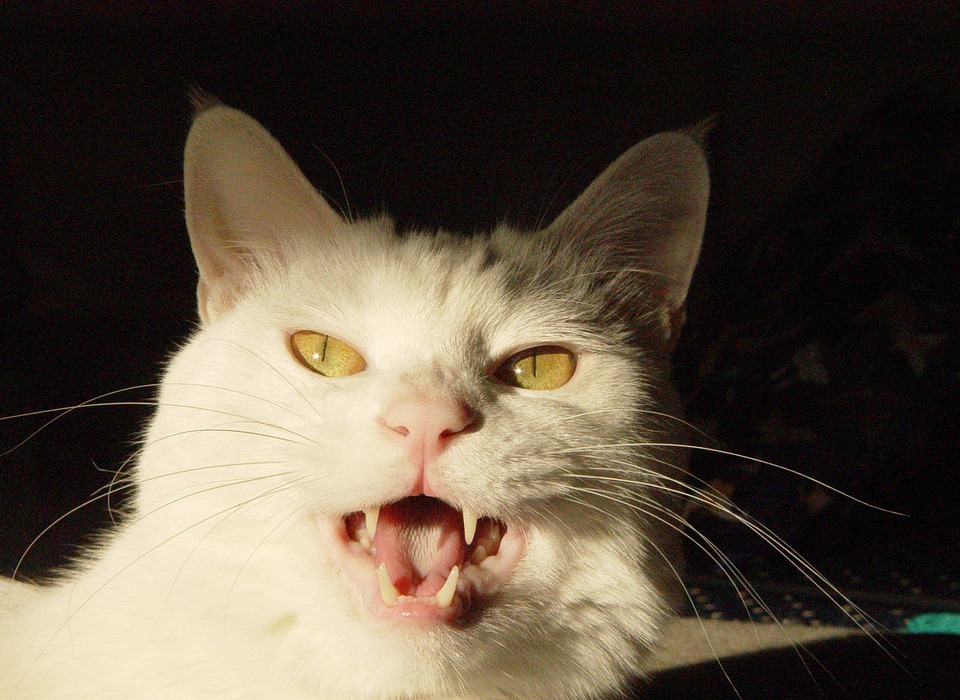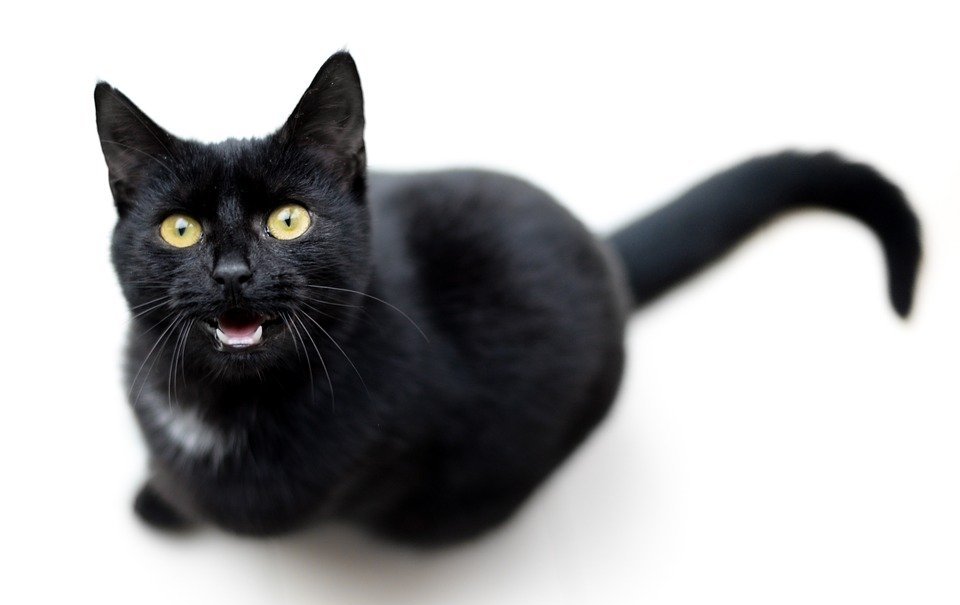This article delves into the fascinating world of feline taste perception, exploring the intriguing question of whether cats can taste sweetness. We will delve into the scientific evidence, examining the structure of their taste buds and the role of taste receptors. We will also consider the implications of their taste preferences for their diet and overall health. Join us as we unravel the surprising truth about cats' ability to taste sweetness and discover what it means for their culinary choices.
Part 1: The Science of Taste

1.1 The Anatomy of a Cat's Tongue
Cats possess a unique tongue structure that is designed for grooming and consuming meat. Their tongues are covered in numerous backward-facing papillae, which act as tiny hooks, allowing them to efficiently lick up food and groom themselves. These papillae are not only crucial for grooming but also play a significant role in taste perception, as they house taste buds.
1.2 The Taste Buds and Receptors
Taste buds are small, sensory organs located on the tongue, palate, and throat. Each taste bud contains specialized cells called taste receptor cells, which are responsible for detecting different taste molecules. These cells contain receptors that bind to specific molecules, triggering a signal that is sent to the brain, where it is interpreted as a taste sensation. Humans have five basic tastes: sweet, sour, salty, bitter, and umami. Each of these tastes is detected by a specific type of taste receptor.
1.3 The Missing Sweetness Receptor
While cats have taste buds and taste receptors, they lack the specific receptor responsible for detecting sweetness. This receptor, known as the T1R2 receptor, is found in most mammals but not in cats. The absence of this receptor explains why cats do not experience sweetness in the same way that humans do. They simply cannot perceive the sweetness of sugar or other sugary substances.
Part 2: The Evolutionary Perspective

2.1 The Role of Sweetness in a Carnivorous Diet
Sweetness is primarily associated with carbohydrates, which are a primary energy source for herbivores and omnivores. However, cats are obligate carnivores, meaning their diet consists primarily of meat. They have evolved to derive their energy from protein and fat, making sweetness less relevant to their nutritional needs. In the wild, cats typically prey on small animals like rodents, birds, and fish, which are not high in carbohydrates.
2.2 The Potential Disadvantages of Sweetness
In the case of cats, the ability to taste sweetness may have posed some evolutionary disadvantages. The consumption of sugary foods can lead to health problems such as obesity, diabetes, and dental issues. The lack of sweetness perception may have helped cats avoid these negative consequences, allowing them to focus on a diet that is rich in protein and fat, essential for their survival and energy needs.
Part 3: The Evidence: Experiments and Observations
3.1 Studies on Taste Preferences
Several studies have been conducted to investigate cats' taste preferences. These studies have shown that cats are highly attracted to the taste of meat, fish, and other animal-based proteins. They show little to no interest in sweet-tasting substances, such as sugar or honey. For example, a study published in the journal "Animal Behaviour" found that cats were more likely to choose a food containing meat over a food containing sugar, even when the sugar was presented in a palatable form.
3.2 Observations in the Wild
In their natural habitat, wild cats primarily prey on small animals, such as rodents, birds, and fish. These prey animals are not typically high in sugar content. This further supports the idea that sweetness is not a significant taste for cats. Observations of wild cats have shown that they are not attracted to fruits or other sugary substances, further reinforcing the notion that sweetness is not part of their natural diet or taste preferences.
Part 4: The Implications for Cat Food
4.1 Avoiding Sweetness in Commercial Cat Food
Commercial cat food manufacturers understand the importance of providing cats with a diet that meets their nutritional needs. As a result, most cat foods are formulated to be low in sugar and high in protein. The primary ingredients in cat food are typically meat-based, providing essential protein, fat, and other nutrients. However, some cat foods may contain small amounts of carbohydrates for palatability purposes, which may include a small amount of sugar.
4.2 The Role of Artificial Flavorings
To make cat food more appealing, manufacturers often use artificial flavourings and additives. While these ingredients may enhance the taste and aroma of cat food, they do not contribute to its nutritional value. It is important to choose cat food brands that use natural ingredients and avoid excessive artificial additives. Some natural flavourings, such as meat extracts, are often used to enhance the taste of cat food without adding unnecessary sugar or artificial additives.
Part 5: The Impact on a Cat's Health
5.1 The Dangers of Excess Sugar
While cats cannot taste sweetness, they can still consume sugar if it is present in their food. Excessive sugar consumption can lead to weight gain, diabetes, and other health problems. It is essential to monitor your cat's sugar intake and choose low-sugar cat food options. A diet high in carbohydrates, including sugar, can disrupt a cat's metabolism, leading to weight gain and health complications.
5.2 The Importance of a Balanced Diet
A balanced diet is crucial for maintaining a cat's health. This means providing them with a sufficient amount of protein, fat, and essential nutrients. It is important to consult with your veterinarian to determine the best diet for your cat based on its age, breed, and activity level. A veterinarian can recommend specific cat food brands or dietary plans that meet your cat's individual needs, considering factors such as age, health conditions, and activity levels.
Part 6: The Role of Genetics
6.1 Variation in Taste Perception
While the majority of cats lack the T1R2 receptor, there may be some individual variation in taste perception. Some cats may have a slightly more sensitive taste bud system or may be more responsive to certain artificial flavorings. This individual variation could be due to genetic differences, with some cats having a slight variation in their taste bud development or sensitivity.
6.2 The Importance of Individual Preferences
It is important to recognize that every cat is an individual and may have unique taste preferences. Some cats may be more willing to try new foods, while others may be more picky eaters. It is essential to be patient and experiment with different food options to find what your cat enjoys. This includes exploring different brands, flavors, and textures of cat food to find what suits your cat's preferences.
Part 7: The Myth of Cats and Sweetness
7.1 Misconceptions and Anecdotal Evidence
There are many anecdotes about cats being attracted to sweets. However, it is important to distinguish between actual taste perception and other factors that may influence a cat's behaviour. Some cats may be drawn to sweet foods because of their smell or texture, rather than their taste. For instance, a cat might be attracted to the sweet smell of a dessert, but it is not tasting the sweetness itself.
7.2 The Importance of Scientific Evidence
Scientific studies have conclusively shown that cats cannot taste sweetness. Therefore, it is important to rely on evidence-based information rather than anecdotal reports when understanding a cat's sensory abilities. While anecdotes can be interesting, it is essential to rely on scientific evidence to understand the true nature of a cat's taste perception.
Part 8: The Role of Smell in Taste
8.1 The Power of Olfaction
Cats have an exceptionally strong sense of smell, which plays a crucial role in their ability to find food and navigate their environment. They have about 14 times more olfactory receptors in their noses than humans, making them highly sensitive to scents.
8.2 Smelling Sweetness
While cats cannot taste sweetness, they can certainly smell it. The olfactory system detects volatile molecules that are associated with various aromas, including sweetness. This could explain why cats might be drawn to sweet-smelling treats or foods, even though they cannot taste the sweetness itself.
Part 9: The Importance of a Balanced Diet
9.1 Nutritional Needs of Cats
Cats have unique nutritional needs due to their obligate carnivorous diet. They require a high protein intake, as well as essential fatty acids, vitamins, and minerals.
9.2 Avoiding Excess Carbohydrates
A balanced diet for cats should be low in carbohydrates, including sugar. Excessive carbohydrates can lead to health problems such as obesity, diabetes, and pancreatitis. It is essential to choose cat foods that are specifically formulated for cats and provide a balanced ratio of protein, fat, and carbohydrates.
Part 10: FAQs
10.1 Can cats taste sweetness in any form?
Cats lack the specific taste receptor for sweetness, so they cannot experience sweetness in the same way that humans do. However, they may be attracted to sweet foods due to their smell or texture.
10.2 Can I give my cat a small amount of sugar?
It is not recommended to give your cat sugar as it can lead to health problems such as obesity, diabetes, and dental issues. Stick to low-sugar cat food options.
10.3 Do cats like artificial sweeteners?
Cats are not known to have a preference for artificial sweeteners. These substances may not activate the same taste receptors as natural sugars.
10.4 Do cats enjoy sweet-smelling treats?
While cats may enjoy the smell of sweet treats, this does not necessarily mean they are tasting the sweetness. They may be attracted to the aroma or other components of the treat.
10.5 What is the best diet for a cat?
A balanced diet for a cat should consist primarily of protein and fat. Choose cat food that is specifically formulated for cats, with a high protein content and low sugar levels.
10.6 Can I give my cat honey?
Honey should be avoided as it contains high amounts of sugar. It is not a suitable food for cats.
10.7 Do cats have any other unique sensory abilities?
Cats have exceptional senses of smell and hearing. Their sense of smell is much stronger than that of humans, allowing them to detect a wide range of scents. They also have a wide range of vocalizations that they use to communicate with each other.
Everyone is watching

Are Cat Ribs Flexible? Understanding Their Anatomy
CATS & KITTENSThis article delves into the fascinating world of feline anatomy, exploring the flexibility of cat ribs and ho...

Can Cats Eat Bananas? (Everything You Need to Know)
CATS & KITTENSThis article dives into the intriguing question of whether cats can safely enjoy the sweet, yellow fruit, bana...

Cat Lifespan: How Long Do Cats Live?
CATS & KITTENSThis comprehensive guide explores the factors influencing the lifespan of our feline companions, providing ins...

Can Cats Get COVID-19? What You Need to Know
CATS & KITTENSThis article will delve into the fascinating world of feline COVID-19 susceptibility. We'll explore whether ca...

Can Cats Eat Eggs? A Complete Guide to Egg Safety for Your Feline Friend
CATS & KITTENSWhen it comes to treating our furry companions, we all want to ensure we're doing what's best for them. Eggs...
